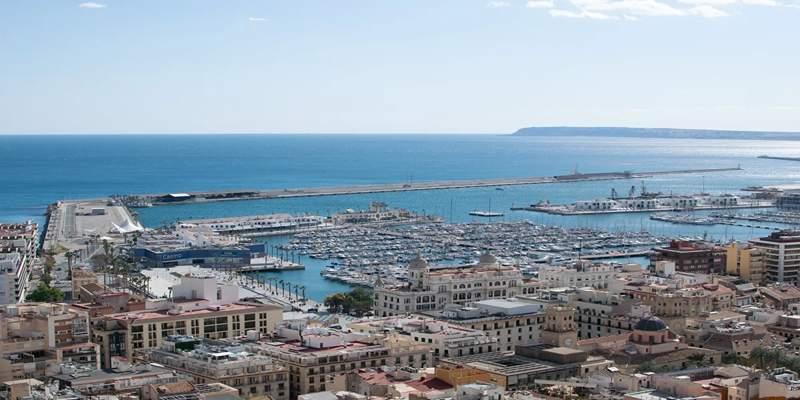Spains appeal lies in its wide-ranging experiences: The range from beach holiday destinations, cultural performances, archaeological sites, and backcountry views. But every region and activity has its optimum period. When planning your vacation in Spain, you will thus enjoy your vacation based on the weather and climates in the country. Whether you dream of the hot summer sun and sandy beaches or the cosier autumnal history and art, maybe it is time to figure out the best time to visit Spain.
Spring (March to May): Blooming Beauty and Pleasant Weather

Spring is an excellent season to travel to Spain, as the weather is neither too cold like winter nor too hot like summer. This season of blooming is preferred by most people as is ideal for travels, tourism, and festivals.
Weather in Spring
Most of the regions in spring hover between 15 to 25 degrees Celsius; and 59 to 77 degrees Fahrenheit, which gives rise to mild climate. The rainy season consists of light precipitation; therefore, people can tour the natural sites comfortably. During these regions, especially in Andalusia, the days are a little warmer, allowing travelers to start taking their early beach holidays.
Activities and Events in Spring
When it comes to outdoor and vibrant festivals Spain best offers in spring. A significant event is Semana Santa which is a holy week and involves elaborate street parades all over the country but is primarily observed in Seville and Malaga. However, for Culinary, May is hosting a patios festival in Crdoba, where the local people embellish the patio of their houses with flowers of different colors. Because nature is blossoming, this season is suitable for exploring landmarks, hiking, and the like.
Summer (June to August): Perfect for Beach Lovers
Summer is the best season to visit Spain for those seeking sun and coastal vibes. Temperatures are highest during this time, especially in the southern regions and on the Mediterranean coast.
Weather in Summer
In summer, expect temperatures ranging from 25C (77F) to 40C (104F), particularly in southern and inland regions. Coastal areas like the Costa del Sol and Balearic Islands are warm but usually have cooler sea breezes, making it comfortable for beach days. Northern Spain, such as Galicia, experiences milder temperatures, making it a great escape from the summer heat.
Activities and Events in Summer
Summer is the time for Spains famous beach destinations. Summer offers endless beach options, from Costa Bravas stunning coves to Ibizas vibrant coastlines. The season is also renowned for festivals such as La Tomatina in Buol, where participants engage in a massive tomato-throwing celebration. Another major event is the San Fermin Festival in Pamplona, which includes the Running of the Bulls.
Autumn (September to November): Mild Temperatures and Fewer Crowds
Autumn offers a more relaxed experience, with mild temperatures and fewer tourists. Its an ideal time to explore cities and cultural sites and enjoy outdoor activities without the summer crowds.
Weather in Autumn
During autumn, temperatures drop to a comfortable 15C (59F) to 25C (77F). Coastal areas remain warm through September, while inland regions start to cool. This season is generally dry, though rainfall increases slightly toward November, especially in the north.
Activities and Events in Autumn
Autumn is perfect for visiting major cities like Madrid and Barcelona. Museums, galleries, and landmarks are less crowded, allowing for a relaxed experience. This season is also famous for hiking in natural parks like Picos de Europa and Sierra Nevada, where fall colors create beautiful landscapes.
Winter (December to February): Ideal for City Exploration and Snow Sports
While winter may not be the first choice for beach lovers, it offers unique experiences, especially in the northern and mountainous regions. Its also an excellent time for city breaks, with Spains historical and cultural sites providing a rich experience.
Weather in Winter
Winter temperatures vary significantly across Spain. Coastal areas like the Costa del Sol remain mild, with temperatures around 10C (50F) to 15C (59F). However, inland regions, especially in the north, experience colder weather, often dropping to near freezing. Snowfall is common in mountainous areas like the Pyrenees and Sierra Nevada, making it ideal for winter sports.
Activities and Events in Winter
Winter is a festive time in Spain, with Christmas and New Year celebrations bringing towns and cities to life. Major cities like Madrid, Seville, and Barcelona light up with decorations, markets, and events. For skiing enthusiasts, Spains mountain ranges offer fantastic snow sports options, with resorts like Baqueira-Beret and Sierra Nevada providing excellent slopes. Winter is also perfect for exploring indoor attractions, such as museums, cathedrals, and historical sites.
Choosing the Best Time Based on Your Interests
Here you can find the best time to travel Spain based on your interests:
Best Time for Festivals and Cultural Events
For festival lovers, spring and summer are the best seasons to visit Spain. The two most celebrated events are Semana Santa in spring and La Tomatina in summer. If youre interested in experiencing Spains cultural and religious traditions, these seasons provide plenty of opportunities.
Best Time for Beaches and Coastal Areas

Beach enthusiasts should plan their visit during the summer when Spains coastal regions are warm. Costa Brava, Costa del Sol, and the Balearic Islands are prime sun, sand, and sea locations. The warm, sunny weather from June to August ensures youll enjoy the best of Spains beaches.
Best Time for Sightseeing and Outdoor Activities
Spring and autumn are the best times for sightseeing and outdoor activities. The mild weather during these seasons makes exploring cities, natural parks, and hiking trails easy. Spring and autumn offer comfortable temperatures for city explorations from the Alhambra in Granada to the Sagrada Familia in Barcelona.
Conclusion
Spain is a destination that offers something unique in every season. Whether you're drawn to its beautiful beaches, vibrant festivals, or historical landmarks, timing your visit can significantly impact your experience. For warm, beach-filled days, summer is ideal. If youre interested in festivals, spring and summer provide vibrant celebrations, while autumn offers milder weather and fewer crowds. Winter is perfect for those interested in cultural city tours and snow sports. By choosing the best season with your interests, you can enjoy Spain to the fullest, making memories that will last a lifetime.







